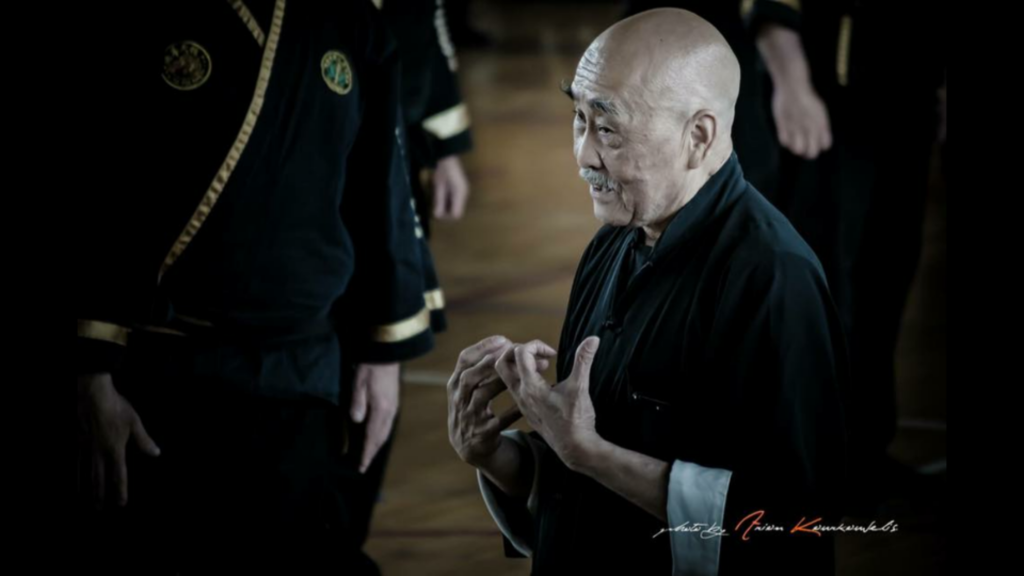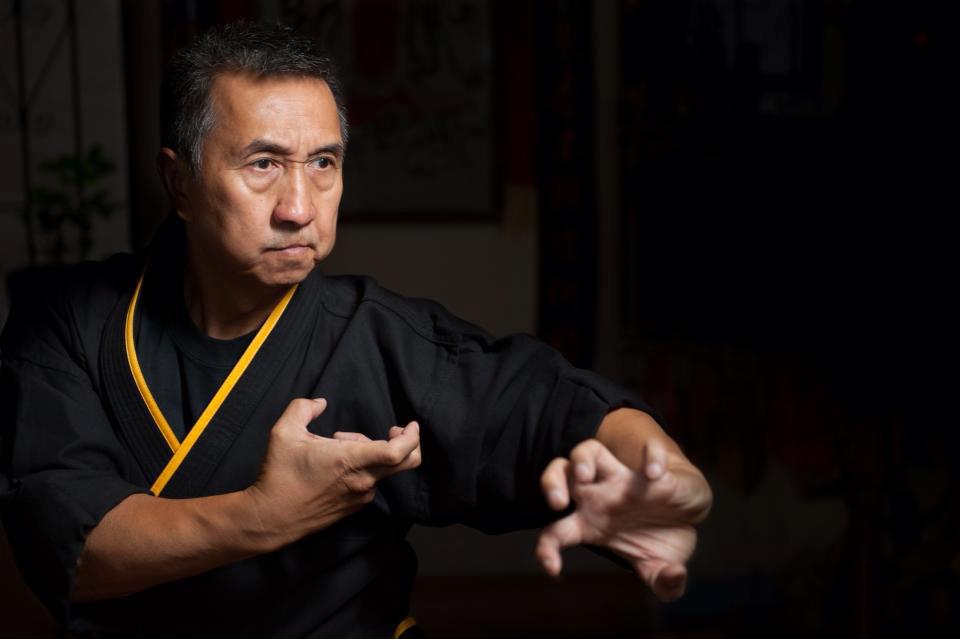Hand Strength in Fu-Jow Pai
By Sifu Julian K. Duran
Hand strength is measured in two fundamental ways: grip strength and resistance to impact. What is meant by grip strength is obvious; it is the ability to apply force with the fingers to hold on to an object with controlling force. The stronger the grip the harder and longer the hands can hold on. Holding on to an opponents body part or clothes can be very difficult to do without risk of injury to the hands. Any opponent will try to resist a grabbing action with violent movement or applied leverage through anti-grasping technique to release or reverse the grab. The muscles and tendons of the hand must be developed to resist injury and ensure a successful grab. In the instance of simple grabbing conventional hand strengthening methods like hand grips may be used.
The tiger claw system of Chinese martial art utilizes a vast array of conditioning exercises to accomplish a stronger hand. In almost every instance the wrists and forearms are developed to accompany and assist the grasping hand. In this unique system it is not only the grasping hand that is developed but even more importantly it is the clawing hand. The hand must be strengthened from the fingertips to the muscles and tendons of the hand, wrists and forearms. This strengthening can be accomplished internally and externally, respectively. If a violent claw is attempted at speed using an untrained hand, severe injury to the hand can be the result.
Internal strengthening comes from unique exercises found as solo exercises and as groups in the tiger claw forms (martial routines) that stretch and strengthen the hands through exaggerated positioning and dynamic tension that puts an abnormal amount of stress on the aforementioned areas so they heal quickly and efficiently from day-to-day practice becoming stronger as they do. Dynamic tension, perhaps invented within the tiger claw system, specifically for strengthening the hands, wrists and forearms, is a method of increasing development not only of the muscles and tendons but the bones themselves. Tension and release are performed throughout the range of motion of a particular movement and coordinated with the breath to create tremendous power that originates internally. Ultimately it is the mind that maximizes development. The practice of dynamic tension must be done with proper timing and execution for the results to be optimal; in short: mindful training allows the practitioner to generate great force to the hands.
Tiger claw employs many methods of external training for hand strength. We begin with fingertip push-ups of which there are variations specific to developing the tiger claw as a strong weapon. The tiger claw 9 count fingertip push-up is unique to the system and will be covered in detail in another article. Knuckle push-ups are also used to “solidify the fist”, strengthen the wrist and major muscle groups that channel strength to the hands. Bags filled with malleable yet weighty material such as metal shot are thrown and caught or snatched while hanging from a chain or resting on a pedestal. Another unique training device in the tiger claw system is the tiger claw stick which is twisted and squeezed in very specific patterns to the style as well. The ultimate array of goals for the tiger claw martial artist’s hand strengthening are to attack with the claws with deadly force or and to grasp or seize a limb and not suffer injury to the hands. These are but a few methods found within Fu-Jow Pai kung fu.
Resistance of the hands is a form of strength found in virtually all martial arts but the tiger claw variety also aids developing the claw directly. Tiger claw iron hand training is wide and varied according, specifically, to the weapon being developed. All striking areas of the hand (and fingers) are developed to strike with maximum force. Great hand strength is required in the form of resistance to concussive force at great speed. Sharpness of striking and clawing is also developed to such a high degree as to make the hand a devastating weapon that becomes impervious to injury in heightened, aggravated states of combat.
The Tiger Claw Towel Exercise
Saturate a dish towel with water and wring it out in one direction until the towel is completely wrung out and repeat the process in the other direction. Remember to pull in opposite directions while wringing. This might be difficult at first but it will improve with time. Do this as often as possible without discomfort or injury over the course4 of months in most cases until the towel rips in half. As hand/finger strength improves begin to use the finger tips more and more which will help the use of the tiger claw greatly.
“Hands are unique weapons in the Chinese martial arts.” ~ Grandmaster Wai Hong
Tennis Ball Ripped in Half with Tiger Claw – 15 minutes a day for about a year, about 7 minutes each hand. It split perfectly in 2 not on a seem but on a perfect fault created by inserting claws perfectly every day. Separating the ball was done with one fast double claw ripping the ball in two. The hide was very stubborn! Anyone can do with this patience, determination, consistency and precision.
~ J. K. Duran

